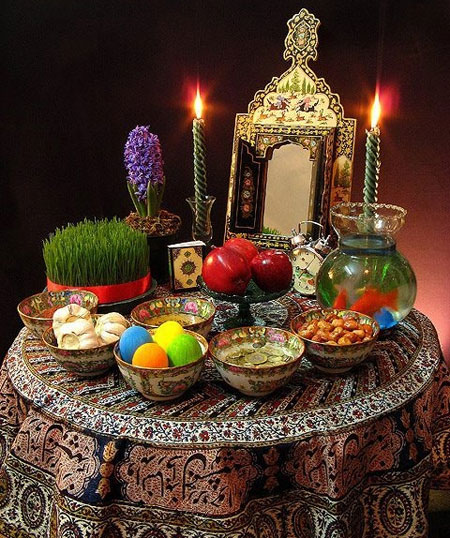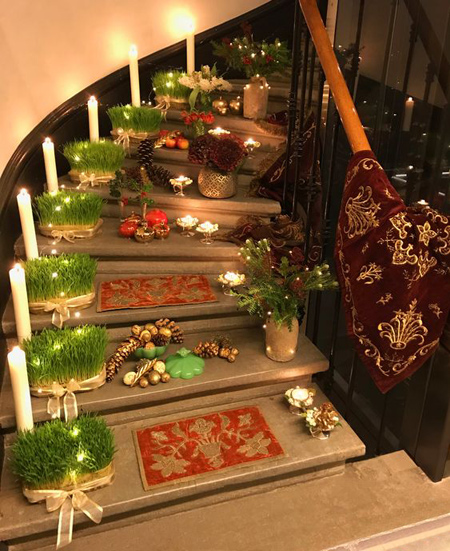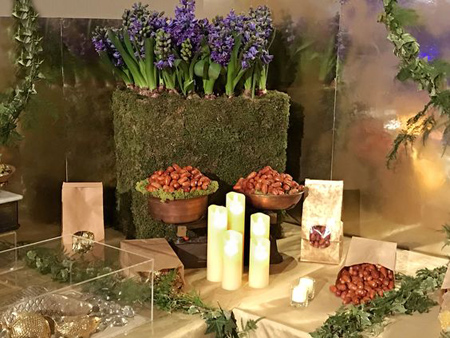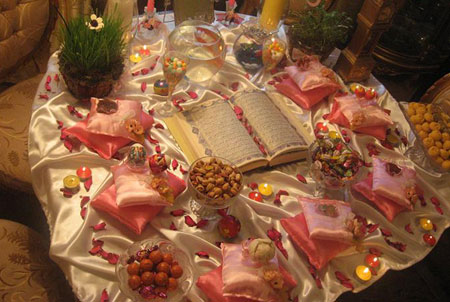NOROOZ Iranian biggest ceremony
Norooz is biggest Iranian ceremony, Norooz, the Iranian/Persian New Year starts on the exact moment of the Vernal Equinox. As it is marked by the beginning of spring (1st Farvardin(Iranian month)), Norooz is the universal celebration of renewal and rebirth. Just when the flowers blossom and the trees come to life, the Norooz Festival takes over the city bringing joy and celebration to all. Iranian has some nice traditions for example: wear new clothes to be beautiful and clean, they meet older, create a Haft seen (seven s), visiting relatives, go on trip and give gift to younger.
Haft seen: To celebrate the New Year, families gather around a specially prepared holiday table to make wishes for the coming months. Items on the table refer to new life and renewal, and they are based around the number seven. Although the custom has evolved over the centuries and may have regional variations, at least seven basic items, each beginning with the letter s (sin in Persian), are traditionally placed on the haft sin table. Many of them also refer to the seven Zoroastrian immortals that guarded the sky, waters, earth, fire, plants, animals, and humans in ancient Iran.
7 sin (s):
Sib (apples) fertility and beauty (usually use red apple)
Sonbol (hyacinth) fragrance
Serkeh (wine vinegar) immortality and eternity
Senjed (wild olives) fertility and love
Sabzeh (wheat, barley, or lentil sprouts growing in a dish) rebirth
Samanu (wheat sprout pudding) sweetness
Sekkeh (coins) wealth
(You can use garlic (sir), Sumac (somaq)instead)
Other symbols of good luck can also be placed on the table, such as:
Sumac (somaq) , to show Patience
Garlic (seer), to bring good health
A gold fish, to show live and life
A mirror, to reflect the light of wisdom and creation
A book of poetry by the fourteenth-century writer Hafiz, whose poems are believed to predict the future
Rose water, to purify and sweeten
Candles, to remove uncleanness
Decorated eggs, to represent fertility
A copy of the Koran, to signify prayers






